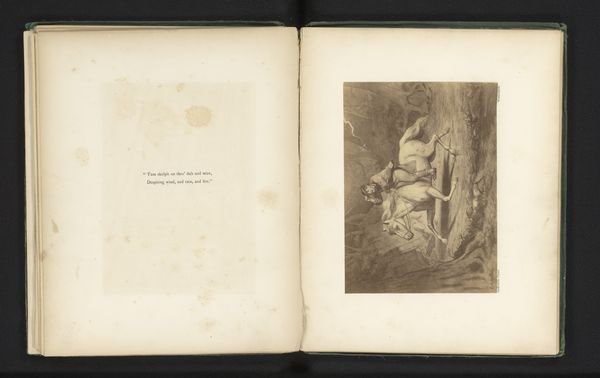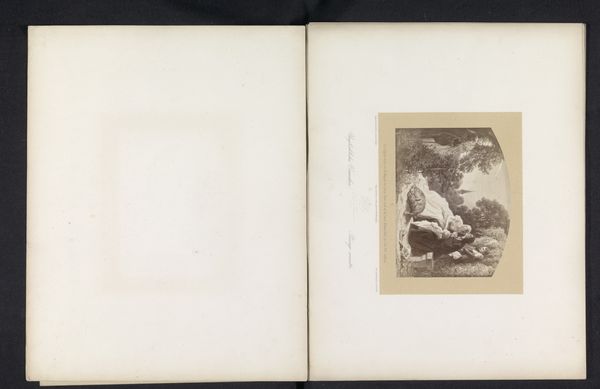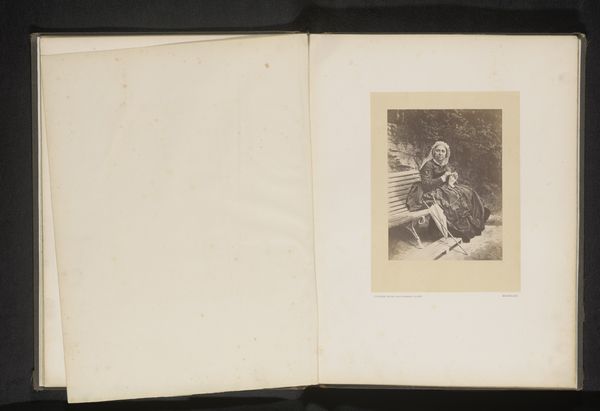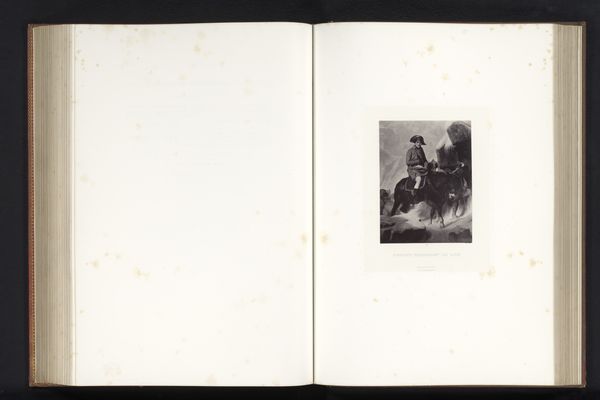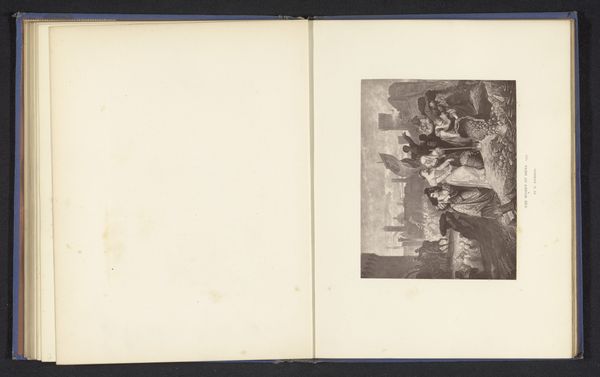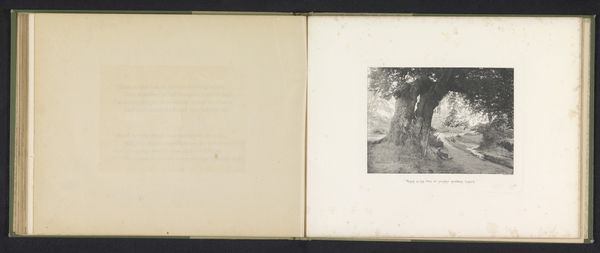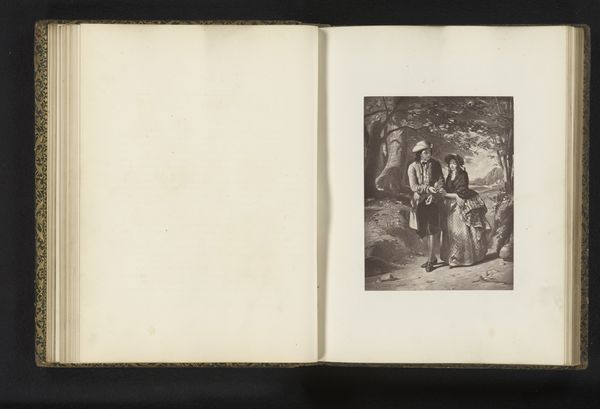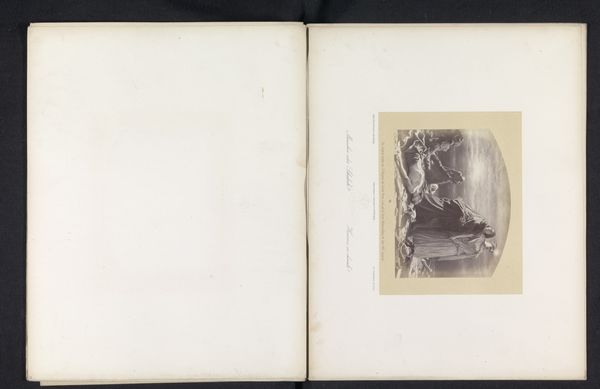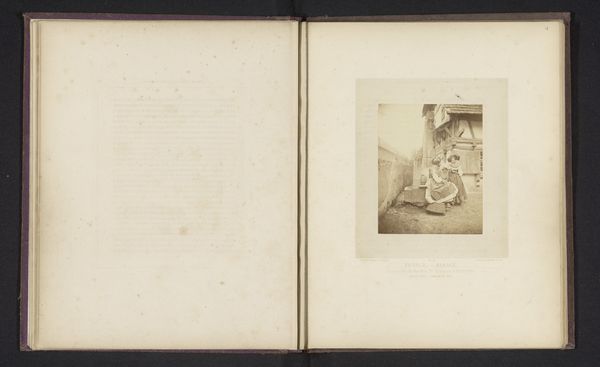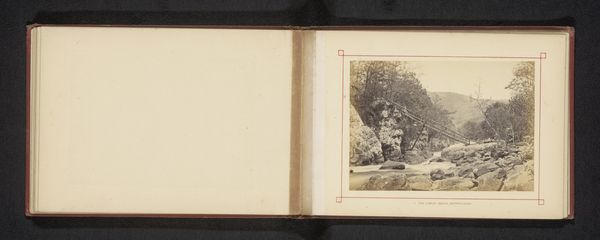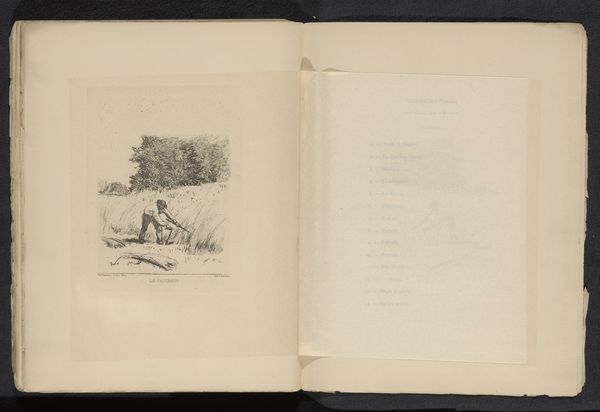
Reproductie van een gravure naar het schilderij The little ducks door Karl Wilhelm Dieffenbach c. 1866 - 1871
0:00
0:00
Dimensions: height 160 mm, width 121 mm
Copyright: Rijks Museum: Open Domain
Curator: Here we have a reproduction of an engraving after Karl Wilhelm Dieffenbach’s painting, “The Little Ducks,” likely dating between 1866 and 1871. The media used include lithograph, print and etching on paper. Editor: What a sweet, albeit somewhat sentimental scene! The monochromatic rendering lends a hazy, dreamlike quality. The textures – the child’s soft hair, the rough feathers of the hen, the rippling water – are beautifully articulated through subtle gradations of tone. Curator: Indeed. This print is quite telling of its time. The Victorian era was marked by sentimental depictions of childhood and nature. Dieffenbach, as seen through the lens of this reproduction, contributed to this sentimental visual culture. Editor: I'm intrigued by the composition. The child, centrally located, forms a visual triangle with the hen and the ducks, grounding the scene. The background, a blurred landscape, functions as a soft, romantic backdrop that helps bring to focus that key, internal triangle. Curator: Consider the social context. These images offered idealized views of childhood. This print would've found an audience seeking moral and aesthetic refinement within their domestic sphere. Think of it hanging in a parlor. Editor: From a purely formal perspective, notice how the engraver manipulates light and shadow to create a sense of depth, the water seems so shallow. The contrast directs our gaze immediately to the interaction between the child and the ducks. This reminds me of early photographic compositions that were hand retouched to soften contrast. Curator: Yes, photography greatly influenced painting and printmaking at this time, didn't it? And prints like this served as important conduits of artistic ideas, circulating imagery widely, allowing even those without access to original paintings to partake in the consumption of art and these sentimental notions of domesticity and the family. Editor: Ultimately, whether we find it overly sentimental now, the delicate interplay of light and texture elevates this print beyond simple genre painting. There's a careful hand here and some consideration given to structure in visual layering, a dedication to rendering the surface qualities and the interaction within the triangle dynamic interesting, however predictable it may seem now. Curator: A fitting point, showing how cultural context can enrich our viewing and acknowledging that technique transcends mere sentimentality. Thank you.
Comments
No comments
Be the first to comment and join the conversation on the ultimate creative platform.
